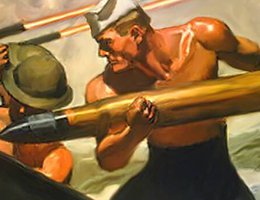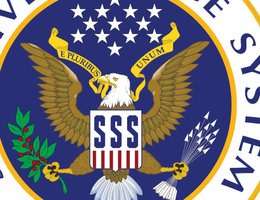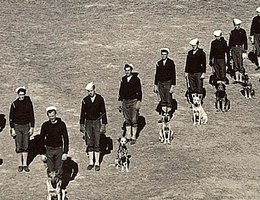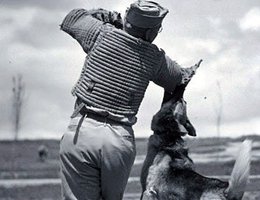

In the early days of World War II there was eagerness and dedication to the war effort. Thousands of young men answered the call to join the military. But the services found that sometimes their recruits needed a lot of training. The young recruits were needed badly so the military would not refuse to accept them. If the new recruits could not read well enough to understand training materials and instructions, other servicemen had to teach them. But if those servicemen were 1-A (“available for military service”) they were needed in battle. So, other service members who weren’t available to fight became the teachers.
"What had happened in early 1942, with all this rush to get men in a hurry and into training, along about June or July 1942, they realized all of a sudden, that they [the army] had about a quarter of a million people that they considered functionally illiterate. They couldn’t read a Military order or they couldn’t read at all, or they couldn’t write. It looked like it would be a tremendous loss to throw a quarter of a million people out. . . They needed some instructors or teachers. So I was sent down along with some other people. We were trying to lift them up to about the third, fourth, or fifth grade level educationally, so that they could function with some simple math, [so that] they could understand orders if they were written fairly simply. They could read some of our army field manuals, because they were written down on a lower level. They reviewed the work this battalion was doing . . . Then they said, ‘Hey, wait a minute. Those instructors are 1-A people. Let’s find ourselves some limited service personnel — that could still be good instructors, and let’s get those fellows back in their old units that are good combat material.’ So, boom! Back to the infantry I went."
— Otis Mattox, Unadilla High school teacher, later U.S. Army Infantryman, European Theater

After the draft was instituted in 1940, not all of the young men who registered were accepted into the service. Thirty percent of registrants across America were rejected for physical defects. The 4-F classification was given primarily for muscular and bone malformations, hearing or circulatory ailments, mental deficiency or disease, hernias, and syphilis. There were ramifications when a man got that classification.
"Nobody wanted to date these boys who didn’t pass their physicals, and we called them "4-Fers." Now that I think back, that was terrible. . . We all thought they were physically unfit to go and fight for our country. How awful!" — Sylvia Iwanski Chalupsky, Ord, Nebraska State Bank employee.
"When I started college in the fall of 1944, it was like a girls’ school — 95 women and only five men students. During the second semester of my sophomore year, more male students were enrolled. By 1948 when I graduated, there were twice as many men as female students. During that first year, several of the girls dated high school seniors because to us the boys on campus were ‘4-F.’ They needed a good reason for not being in the service to be respected by the girls." — Wanda Mowry, Bayard High School student.

In the fall of 1942, a K-9 (or canine) Corps reception and training center was established at Fort Robinson, Nebraska. It became the country’s largest K-9 Corps reception center, where thousands of dogs were trained for war duty. Dogs were used to act as guards, to sniff out mines, to carry messages, and to pull sleds.

Barracks, classrooms, administrative offices, and other support buildings were located west and north of the historic Fort. To the east and north was a sprawling kennel area housing 1,800 dogs. Training normally lasted 8 to 12 weeks. Of the 5,000 dogs used by the Army in the war, half of those were trained here. Until war’s end, dogs were also trained for the Army Air Force, Navy, Coast Guard, and civilian agencies. Eventually some 14,000 dogs were shipped to Fort Robinson for training. The center was closed in June 1946.